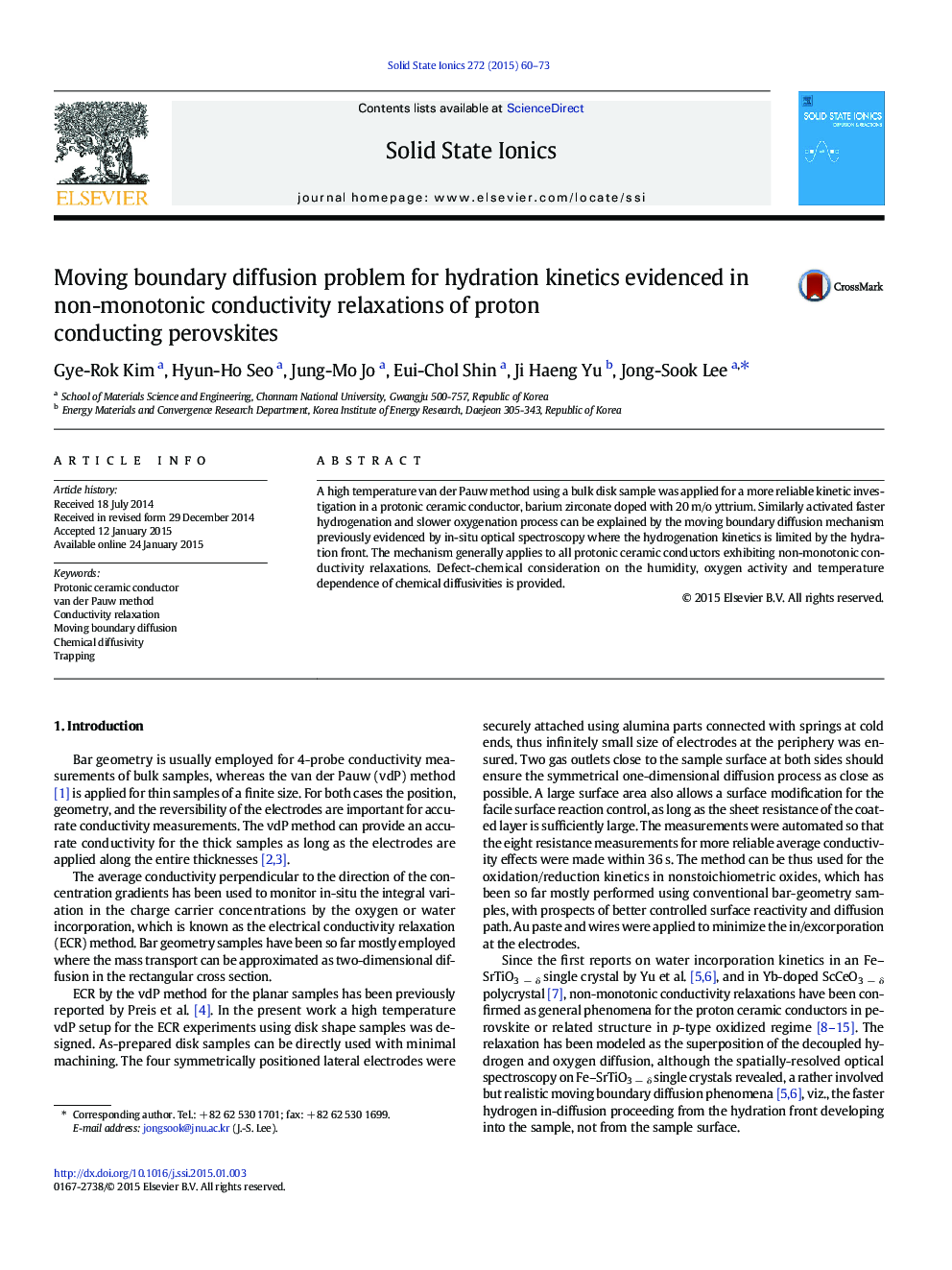| Article ID | Journal | Published Year | Pages | File Type |
|---|---|---|---|---|
| 1296322 | Solid State Ionics | 2015 | 14 Pages |
•High temperature van der Pauw method on disk samples with peripheral electrodes•Moving boundary diffusion mechanism for water incorporation in proton conductors•Composition-dependent kinetics in Y-doped barium zirconate–cerate solid solutions•Similar T-dependence of chemical diffusivity for hydration and oxygen incorporation•Hole trapping mechanism for the activation energy of chemical diffusivities
A high temperature van der Pauw method using a bulk disk sample was applied for a more reliable kinetic investigation in a protonic ceramic conductor, barium zirconate doped with 20 m/o yttrium. Similarly activated faster hydrogenation and slower oxygenation process can be explained by the moving boundary diffusion mechanism previously evidenced by in-situ optical spectroscopy where the hydrogenation kinetics is limited by the hydration front. The mechanism generally applies to all protonic ceramic conductors exhibiting non-monotonic conductivity relaxations. Defect-chemical consideration on the humidity, oxygen activity and temperature dependence of chemical diffusivities is provided.
